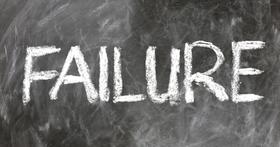Top Rankings
East Orange School District ranks among the top 20% of public school district in New Jersey for:
Category
Attribute
Community Size
Largest student body (number of students) (Top 1%)
For the 2025-26 school year, there are 3 public high schools serving 3,055 students in East Orange School District. This district's average high testing ranking is 3/10, which is in the bottom 50% of public high schools in New Jersey.
Public High Schools in East Orange School District have an average math proficiency score of 13% (versus the New Jersey public high school average of 29%), and reading proficiency score of 40% (versus the 47% statewide average).
Public High School in East Orange School District have a Graduation Rate of 86%, which is less than the New Jersey average of 91%.
The school with highest graduation rate is East Orange Stem Academy High School, with ≥95% graduation rate. Read more about public school graduation rate statistics in New Jersey or national school graduation rate statistics.
Minority enrollment is 99% of the student body (majority Black), which is more than the New Jersey public high school average of 63% (majority Hispanic).
Overview
This School District
This State (NJ)
# Schools
20 Schools
548 Schools
# Students
8,664 Students
467,298 Students
# Teachers
617 Teachers
36,806 Teachers
Student-Teacher Ratio
14:1
14:1
Student By Grade
District Rank
East Orange School District, which is ranked within the bottom 50% of all 645 school districts in New Jersey (based off of combined math and reading proficiency testing data) for the 2022-2023 school year.
The school district's graduation rate of 85% has increased from 79% over five school years.
Overall District Rank
#582 out of 648 school districts
(Bottom 50%)
(Bottom 50%)
Math Test Scores (% Proficient)
14%
38%
Reading/Language Arts Test Scores (% Proficient)
30%
49%
Science Test Scores (% Proficient)
7%
23%
Graduation Rate
85%
85%
Students by Ethnicity:
Diversity Score
0.33
0.72
% American Indian
n/a
n/a
% Asian
n/a
10%
% Hispanic
16%
34%
% Black
81%
17%
% White
2%
37%
% Hawaiian
n/a
n/a
% Two or more races
1%
2%
All Ethnic Groups
District Revenue and Spending
The revenue/student of $32,461 is higher than the state median of $26,940. The school district revenue/student has stayed relatively flat over four school years.
The school district's spending/student of $32,647 is higher than the state median of $25,837. The school district spending/student has stayed relatively flat over four school years.
Total Revenue
$281 MM
$36,642 MM
Spending
$283 MM
$35,142 MM
Revenue / Student
$32,461
$26,940
Spending / Student
$32,647
$25,837
Best East Orange School District Public High Schools (2025-26)
School
(Math and Reading Proficiency)
(Math and Reading Proficiency)
Location
Quick Facts
Rank: #11.
East Orange Stem Academy High School
(Math: 26% | Reading: 61%)
Rank:
Rank:
5/
Bottom 50%10
129 Renshaw Avenue
East Orange, NJ 07017
(973) 266-5900
East Orange, NJ 07017
(973) 266-5900
Gr: 6-12 | 609 students Student-teacher ratio: 15:1 Minority enrollment: 99%
Rank: #22.
Cicely L. Tyson Community Middle/high School
(Math: 14% | Reading: 46%)
Rank:
Rank:
3/
Bottom 50%10
35 Winans Street
East Orange, NJ 07017
(973) 414-8600
East Orange, NJ 07017
(973) 414-8600
Gr: 6-12 | 695 students Student-teacher ratio: 11:1 Minority enrollment: 99%
Rank: #33.
East Orange Campus High School
(Math: 3% | Reading: 16%)
Rank:
Rank:
1/
Bottom 50%10
344 Prospect Street
East Orange, NJ 07017
(973) 266-7300
East Orange, NJ 07017
(973) 266-7300
Gr: 9-12 | 1,751 student Student-teacher ratio: 17:1 Minority enrollment: 99%
Recent Articles

Charter Schools vs Public Schools 2025: Key Differences & Trends
Explore updated 2025 insights comparing charter schools vs public schools, enrollment, academic outcomes, funding, and real-world examples for families and educators.

Are Public Schools Ready for the 21st Century? 2025 Update
Explore 2025 insights on whether public schools are ready for the 21st century, covering performance, technology, equity, funding, and future-ready learning.

Public School Open House & Enrollment Season Guide
A parent-focused guide to the public school open house and enrollment season, with expert questions, timelines, and decision tips.





